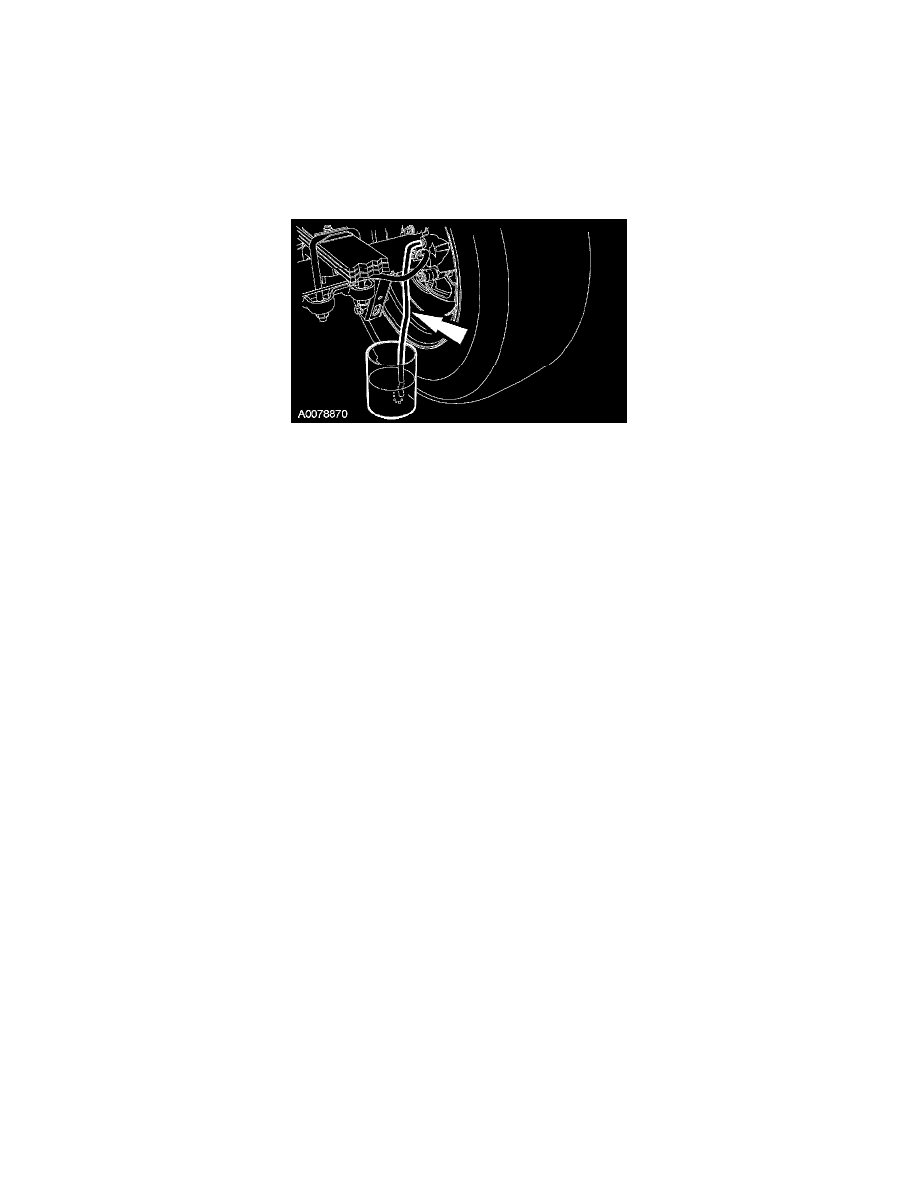F 150 4WD Pickup V8-4.6L VIN W (2006)

with the specified brake fluid. Never reuse the brake fluid that has been drained from the hydraulic system.
NOTE: When any part of the hydraulic system has been disconnected for repair or new installation, air may get into the system and cause spongy
brake pedal action. This requires bleeding of the hydraulic system after it has been correctly connected. The hydraulic system can be gravity bled,
manually bled or bled with pressure bleeding equipment.
NOTE: When a new brake master cylinder has been installed or the system has been emptied or partially emptied, it should be primed to prevent air
from getting into the system.
1. Fill the brake master cylinder reservoir with brake fluid.
2. Connect a clear tube to the RH rear disc brake caliper bleeder screw and place the other end into a container partially filled with recommended
brake fluid.
3. Open the bleeder screw and leave it open until clear bubble-free brake fluid flows.
^
Refill the brake master cylinder reservoir as necessary.
4. Tighten the disc brake caliper bleeder screw.
^
Tighten to 20 Nm (15 ft. lbs.).
5. Repeat Steps I through 4 for the 3 remaining brake calipers, going in order from the LH rear disc brake caliper to the RH front disc brake caliper,
and ending with the LH front disc brake caliper.
6. If the brake pedal feels spongy, repeat the bleed procedure.
Manual Bleeding
WARNING: Use of any other than approved DOT 3 motor vehicle brake fluid will cause permanent damage to brake components and will
render the brakes inoperative. Failure to follow these instructions may result in personal injury.
WARNING: Brake fluid contains polyglycol ethers and polyglycols. Avoid contact with eyes. Wash hands thoroughly after handling. If
brake fluid contacts eyes, flush eyes with running water for 15 minutes. Get medical attention if irritation persists. If taken internally, drink
water and induce vomiting. Get medical attention immediately. Failure to follow these instructions may result in personal injury.
CAUTION: Brake fluid is harmful to painted and plastic surfaces. If brake fluid is spilled onto a painted or plastic surface, immediately wash it with
water.
CAUTION: Do not allow the brake master cylinder reservoir to run dry during the bleeding operation. Keep the brake master cylinder reservoir filled
with the specified brake fluid. Never reuse the brake fluid that has been drained from the hydraulic system.
NOTE: When any part of the hydraulic system has been disconnected for repair or new installation, air may get into the system and cause spongy
brake pedal action. This requires bleeding of the hydraulic system after it has been correctly connected. The hydraulic system can be gravity bled,
manually bled or bled with pressure bleeding equipment.
1. Fill the brake master cylinder reservoir with brake fluid.
